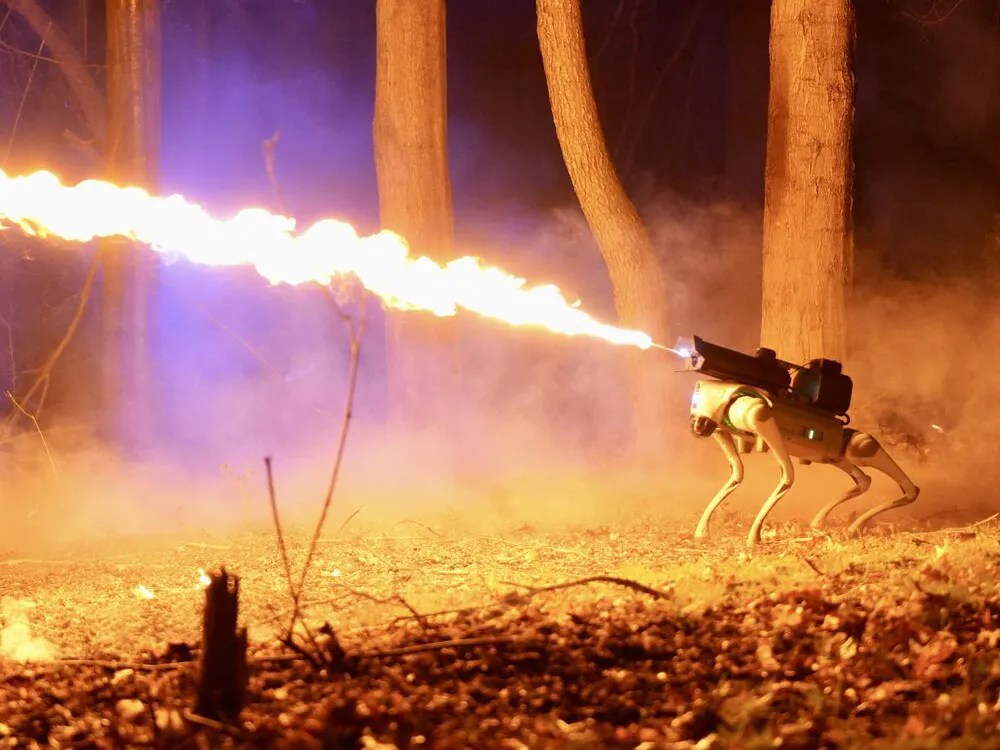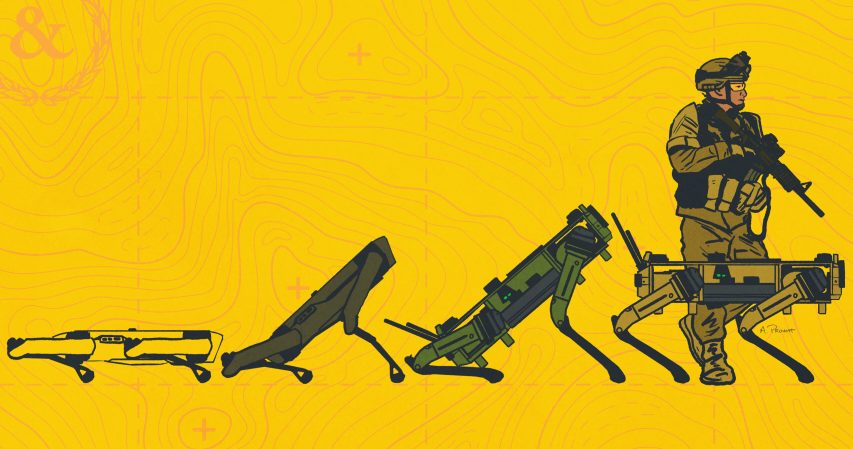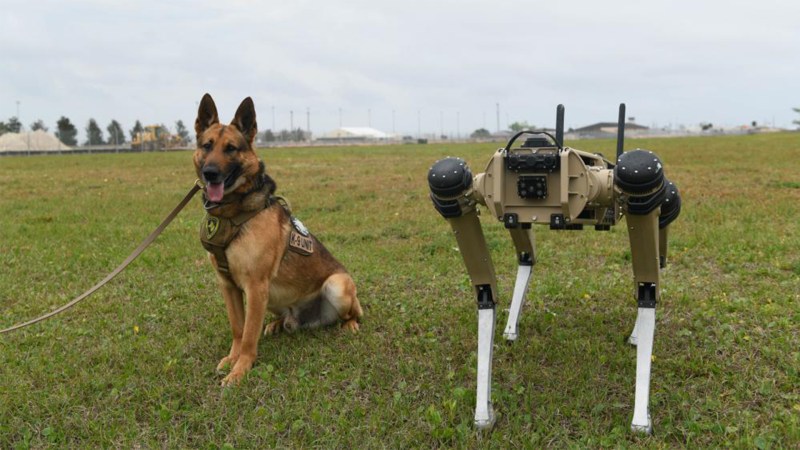Prepare to update the safety brief again: a flame-throwing robot dog can now be yours for less than $10,000.
The Thermonator is the first-ever robot dog equipped with the ARC Flamethrower “to deliver on-demand fire anywhere.” The company behind the dog, Throw Flame, has made a name for itself creating commercial flame throwing devices like the TF-19 WASP, drone flamethrower attachment. The ARC Flamethrower, which is attached to the robot dog, can send 30-foot-long streams of fire up and be mounted on other devices like a tripod, rifle or utility task vehicle, or UTV.
The company is marketing the robot-flamethrower combo for uses like wildfire control and prevention, snow and ice removal and of course, entertainment. For $9,420, Throw Flame will ship the Thermonator anywhere in the U.S with a lifetime warranty.
When Throw Flame produced the WASP drone in 2020, its CEO told Task & Purpose that there had been an uptick in its backpack-style flamethrowers during the emerging threat of the so-called murder hornet.
“It’s hard to correlate these things, but we’ve seen an uptick in our traditional backpack-style flamethrowers, but we’ve gotten a lot of interest and recommendations on our drone flamethrower platform,” Quinn Whitehead, the company’s CEO told Task & Purpose.
Since Throw Flame advertises its tech for agricultural management or ecological conservation, we’ve got one thing on our mind this year: cicadas. The loud and rather ugly insect hordes that make a terrible crunch and screaming sound when stepped on are about to infiltrate the U.S. in record numbers. Several “broods” of cicadas are expected to hatch this summer so to that we say: no thanks, bring in the flamethrowing dogs.
In 2015, the company released its X15 Flamethrower for commercial use which sparked an uproar over its legality. A New York Congressman even tried twice to pass legislation titled “H.R. 4901 — Flamethrowers? Really? Act” which would have classified flamethrowers as akin to automatic machine guns, generally outlawing their sale or use by civilians.
But this is America and you can still own a flamethrower.
“Flamethrowers remain federally unregulated,” according to Throw Flame’s website. “This means that anyone can buy one without background checks or a waiting period. With quick shipping, just like an Amazon package, Throwflame has delivered thousands of X15s around the globe.”
If you think this is the stuff of Hollywood and the big screen, you’re also right. Their flamethrowers have appeared in The Purge, Quarry, Punisher, The Darkest Minds, and Burger King commercials, according to the website.
A state Senator from Ohio, Niraj Antani, featured an XL18 flamethrower in his campaign ad for Ohio’s 2nd Congressional district, as a challenge to Democrats that he would bring the heat.
“In Congress, I’ll take a flamethrower to the Biden agenda and the weak Republicans who betray us,” Antani said.
Subscribe to Task & Purpose today. Get the latest military news and culture in your inbox daily.
Military use
While the technology sounds like something better left to professional militaries, it’s unsurprising that a flame-throwing robot is available for public consumption. The Department of Defense is increasingly buying civilian technology for military purposes, including robot dogs and commercial drones.

Flamethrowers have a long history in the military, but have often been generally less effective than their fearsome reputation. In fact, the idea goes back to the Roman Empire, whose navy used a still-mysterious burning gel known as Greek Fire to attack other ships, a substance that would stick to enemy hulls and could not be extinguished with water. In the modern world, German soldiers introduced the Flammenwerfer apparaten at the Battle of Verdun in World War. British military leaders reportedly labeled the weapon “an inhuman projection of the German scientific mind” — a sinister, sadistic tool of wanton destruction.
The first American man-portable flamethrower made its first “successful combat appearance” on Jan. 15 1943 at Guadalcanal, according to the Army Center of Military History but troops in the field often lacked the training or tactics to use them properly. Commanders, the Army found, often “selected untrained men and ordered them to take a flame thrower and ‘burn out the Japs,’ a mission which promised little chance of success.”
The DOD ramped up its research on man-portable and vehicle-mounted incendiary weapons following WWII, but incendiary weapons fell out of favor during the Vietnam War as horrifying imagery of their aftermath emerged, including pictures like “Napalm Girl,” the 1972 Pulitzer Prize-winning photo of a naked 9-year-old girl fleeing after surviving a napalm attack. As the American public turned against incendiary weapons, the DOD issued a directive effectively retiring the weapon from the battlefield in 1978.
Since then, the flamethrower has only returned for specific use cases, including during operations in the Middle East. One DOD photo from September 2008 in Iraq, shows an American soldier using a flamethrower to ignite a controlled fire on a roadside to reveal bombs concealed by brush.
The latest on Task & Purpose
- 75th Ranger Regiment sweeps Best Ranger, Best Mortar, and International Sniper competitions
- Married Army couple win back-to-back Sapper school awards
- Special Forces engineers are training to dig ditches and destroy tanks
- This is why Marines were at Mar-a-Lago
- Supreme Court sides with Army veteran in overlapping GI Bill benefits case



![This robot dog with a rocket launcher on its back is the stuff of nightmares [Updated]](https://taskandpurpose.com/wp-content/uploads/2022/08/15/robodog-e1660594111132.png?w=801)





